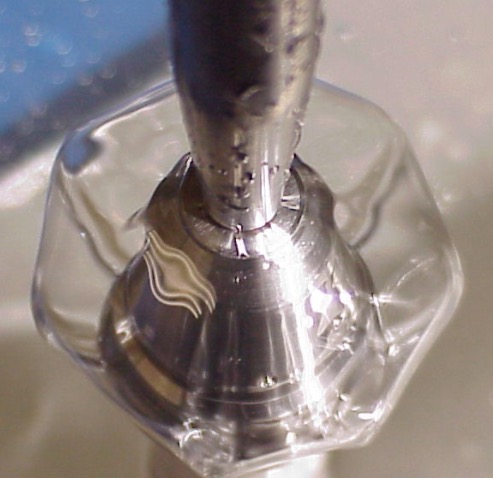





When a vertical water jet strikes a circular horizontal impactor, the water is deflected into a horizontal sheet. At sufficiently high speeds, the flow results in a circular water sheet, whose radius is set by a balance between inertial and curvature forces. At lower speeds, the sheet sags significantly under the influence of gravity, and may close, giving rise to a water bell (Figure 1). We have conducted a series of experiments in order to investigate the influence of increasing fluid viscosity on fluid sheets and bells. The circular fluid sheets are marked by an axisymmetry-breaking instability that results in polygonal structures (Figure 2). Fluid streams from the sheet, into then along the rim, and finally streams from the corners of the polygon. In certain parameter regimes, the streams emerging from the corners take the form of a linked chain (Figure 3). The minimum number of sides observed on the polygons was four. By deflecting the sheet from the horizontal, one may produce sagging structures ressembling fluid umbrellas (Figure 4) or fluid parasols (Figure 5). Axisymmetry is also broken in the fluid bells, which assume the form of polyhedra (Figure 6).
This series of photos appears in Buckingham & Bush, Gallery of Fluid Motion (2001) .
“In my courtyard a fountain leaps and sinks back into itself,
Nun-hearted and blind to the world.”
–Sylvia Plath
